It should appear to any astute observer that the counselling and psychotherapy disciplines are approaching a critical juncture. At the moment it is unclear whether the encroachments of Critical Social Justice Theory (CSJT) into talking therapies are going to be met with a strong enough resistance to prevent a complete capture of the field. In my previous article (Thomas, 2020b), I identified the theoretical arguments against the integration of CSJT into the contemporary mainstream therapeutic practice of talking therapies. In this paper, the final one in the trilogy, I turn to an even more basic objection, that is any talking therapy that declares itself to be informed by CSJT can no longer claim to have a healing ethos—it has mutated into a different kind of cultural practice altogether.
It is not sufficient, however, to stay at the level of abstract speculation: it is necessary to start to spell out what this move might look like in practice. Therefore, I will begin by giving an example of how a counselling service would operate if it nails itself to the mast of intersectionality. I then go on to reflect on the nature of healing and how the therapy field may fracture if this anti-therapeutic agent pushes much further into the counselling and psychotherapy disciplines. The piece ends with some thoughts about what this fractured field might look like and, taking the long view, how a space may be opening up for new types of therapeutic practices to emerge. All the way through, I am using the rhetorical strategy of personifying CSJT in order to render its operations/strategies more concrete and thereby hopefully more transparent.
In my previous article I identified the theoretical objection to the incorporation of CSJT into the pluralistic field of talking therapies. This objection is predicated on its hermeneutics of oppression which undermine the ground of the therapeutic relationship (see Thomas 2020b). This was raised in the hope that clinical theorists and other knowledge producers in various modalities would engage with the urgent project of developing stronger defences to protect the integrity of talking therapies. There is, of course, no guarantee that such a hoped-for concerted effort will emerge. So, what might happen if there are no clear campaigns mounted from within the field to prevent the intrusions of this ideology?
One thing that can be predicted with absolute certainty—will not impose territorial restrictions upon itself. Confronted with its theoretical incompatibility with mainstream counselling and psychotherapy, how likely is it that it will hold up its hands and agree it has been caught bang to rights (British slang for caught with irrefutable proof of wrongdoing) and agree to self-limit? I think the answer to that is obvious. Remember how CSJT operates: it enters a particular arena and starts to colonise it through its strategies of relentless problematizing, inserting new narratives, and aggressively silencing any opposition (usually through public bullying and shaming). In the final stages, CSJT takes over the territory and imposes its own agenda. Therefore, it is important to start to think about where this all might be heading for talking therapies. In the following section I consider what CSJT-centred counselling and psychotherapy services might look like in practice.
The illustration I am using is a recent statement posted by an American university counselling service (John Hopkins University Counseling Center) in the aftermath of the George Floyd killing. This example has been selected for two reasons. The first is that American university campuses have been the incubators of CSJT activism—what has been happening there is now playing out in wider society. I, along with many others who followed the Evergreen State College story, documented by Boyce (2020) and Nayna (2019), observed these early eruptions on campuses, at first with a sense of incredulity that such excesses were tolerated, even supported, by the authorities. However, over time, incredulity turned to deep concern as it became clear that nothing was going to prevent this destructive activism proliferating across different sectors. Consequently, it is important to accept the possibility that university therapy services may be harbingers of what is on its way into mainstream talking therapy provision. Second, the posted statement contains a description of the counselling service that makes the centring of CSJT explicit. These particular descriptions provide some solid ground for thinking about the implications for practice. However, before I turn to the statement itself, it is important to issue a caveat. Taking a charitable view, probably this was a statement issued in haste and comes from a well-intentioned desire to express solidarity with the students. My critical analysis is not aimed at the writers of this statement. Instead I am more interested in what can be gleaned about service provision when there is a fundamental change in the way that counselling is theorised or positioned.
To return to the statement itself. I have extracted two verbatim sections which make the CSJT agenda of the service explicit as follows (see www.criticaltherapyantidote.org for a screenshot of the full statement in case it is removed from the university counselling service webpage):
We also affirm and acknowledge our center must examine ourselves and our systems to ensure that we are doing everything we can to undo and repair, rather than replicate, the white supremacist ideologies that have constructed many of our notions of mental health and mental illness and cause so much harm.
We also recognize the emotional impact of confronting the virulence and insidiousness of anti-Blackness and racism on POCI and white students who are looking to process their own racial identity development and practice of anti-racism. Please also consider us one of many resources in the difficult but necessary work of engaging with internalized bias, recognizing privilege, and aligning values of anti-racism and allyship with embodied and sustained practice.
In my two previous articles I have flagged up the insidious impact of CSJT on the relationship between therapist and client because of the way that it focuses on oppression-based interpersonal power dynamics. Here I will be developing this critique by considering, more generally, the nature of the counselling provided by an explicitly CSJT-centred service. What can be inferred from the extracts posted here? What is likely to happen when a distressed or anxious student arrives for counselling?
To start with, the student is going to be received in a particular way. The moment the student walks through the door, he/she ceases to be understood as an individual first and foremost. The most salient factor is group identity: everything else is secondary. And, furthermore, their difficulties will be dealt with differently, based on their identity. The ramifications of this radically different framing to the one usually provided in mainstream counselling approaches are extensive. In addition, minimal thought appears to have gone into how this approach will work in practice. Let’s consider just a couple of the obvious issues.
First, the student’s difficulties will be diagnosed along particular lines. A student arrives in a state of emotional/psychological distress and it is likely that their presenting problems will be understood as manifestations of the negative impact of white supremacist ideologies. It is unclear what exceptions might be allowed and on what basis. Neither is it clear who makes this diagnosis—the counsellor?
As a corollary to this position on diagnosis, the student will be encouraged to view themselves as a victim. For example, a female student might arrive presenting with anxiety around her academic work. She will be encouraged to understand her difficulties as arising from an oppressive patriarchal system, one that is automatically rigged against women. It is highly unlikely that the student would be helped to take responsibility for her own learning and develop useful study strategies to improve her grades.
Second, the work with the client will be determined by their group identity. In the extracts taken from the university counselling service statement it is clear that the work in this centre will be racialised; presenting problems are mainly caused by ‘white supremacist ideologies’. So, how might this play out?
To take the following example—a male student arrives who is recovering from a physical assault and needs some professional help to deal with the psychological after affects. If this is a white student assaulted by a couple of black men, is he going to be encouraged to view the perpetrators as victims of a white supremacist society in which he is implicated with the consequence of minimising his own suffering? If it is a black student assaulted by a couple of white men, will he be encouraged to view this as further corroboration of his own oppressed status, and therefore encouraged to make this trauma a central, defining experience which determines the direction of his life?
And, overall, what happens with all the common difficulties that young people experience when establishing themselves as adults? Will they all be funnelled down this narrow ideological pathway—a pathway which they have already been exposed to through their experience of school? It looks as if this CSJT-centred counselling approach will just serve to further consolidate a victim mindset. Furthermore, it will only offer one possible solution to whatever is presented and that, of course, is political activism. In the final analysis, the main purpose of this counselling service appears quite explicitly to help white students commit to their anti-racism practice and students of colour to foreground their experience of racism.
Needless to say, there is no evidence base or cumulative clinical observations that this kind of CSJT-centred counselling is effective. Neither are there any clear methods or protocols: to any professionally trained counsellor this looks like an ad hoc, incoherent, cobbled together, and unethical way of working with vulnerable people. In fact, rather than being helped by this type of counselling service, it is much more likely that young people would be harmed. They would be encouraged to view themselves as victims without agency whose only important attributes are their immutable characteristics. It is a very far cry from what would usually be expected of generic counselling services, i.e., to prioritise the individual and provide a space for them to explore their difficulties and find ways to move forward, become more resourceful, and live more productive fulfilling lives.
If this statement is an indication of what CSJT-centred counselling services would look like then we can say, with confidence, that whatever this is it is no longer therapy. Instead, it appears as if the student clients’ vulnerability is going to be cynically manipulated to consolidate and further inculcate a political ideology; one they have no defences against because they have already been shaped by it through their earlier education. In other words, this approach looks like indoctrination masquerading as a therapeutic service. To put it even more bluntly, you could say that counselling is being used to facilitate a process of psychological imprisonment.
Therefore, on these grounds, CSJT-centred counselling is disqualified as a therapy—it is a cultural practice that is informed by the hermeneutics of oppression and thereby explicitly focused on power. It is a political enterprise. It does not possess a healing ethos.
What is the essential nature of a healing ethos? It seems extraordinary that we have arrived at a point when we must restate the therapeutic intent of counselling and psychotherapy which should be self-evident. A healing ethos is the heart of therapy: it is characterised by an unwavering commitment to the flourishing of the person who is seeking your help. In talking therapies, more specifically, this is the obligation to draw on expertise, experience, knowledge, research, and clinical theories to promote the well-being of the clients who access your services. Above all, it is the provision of a relationship that promotes the flourishing of the individual. One way of summing this up would be to say that the essential nature of healing is love. Unsurprisingly, reviews of the research indicate that the client’s perception of being regarded by the therapist in an unconditional and warm way is generally associated with positive outcomes in therapy—see Cooper’s summary of the research findings (2008). To put it plainly, a healing ethos comes from the heart.
At this point, it is fitting to take a step back and consider the context in which this development is happening. It is a truism to note that there is an inextricable inter-relationship between healing practices and wider society. The impulse to heal is universal—but how it manifests is inevitably shaped by culture and history. Times of great historical change, like the times we are now living in, are accompanied by changes in cultural practices, including healing methods. We should expect that the seismic disturbances in our culture will be also rippling out through the disciplines of counselling and psychotherapy. Furthermore, we should anticipate that these changes will operate at a profound structural level.
How is this likely to play out? I would take a bet that the therapy field will start to fracture along the lines already indicated: critical and traditional. At the moment, it looks as if counselling and psychotherapy will continue to be colonised by CSJT, a political ideology wedded to power as the defining condition of human life. A distributed selection process will recruit entrants into the professions with this world view and increasingly exclude those from ‘oppressor’ groups. Problematising will ramp up and drive out any other heterodox perspective. Training institutions will become even more compliant and orthodox. Counselling services in education, institutions, and corporations (in the form of employee assistance programmes) will require more compliance with diversity and will become more dominated by CSJT-informed HR policies. Meanwhile, people with a strong healing ethos will bail out of professional training or leave the profession or only work in private practice silos. Unfortunately, I think it is inevitable that over time these disciplines will increasingly become hollowed-out enterprises dedicated to empty interrogations of power relations and regulated by moribund self-serving professional bodies. In the end, therapy without a heart is dead in the water.
Meanwhile, on the other side, something new will emerge; radical innovative therapeutic forms no longer called counselling and psychotherapy. These will be new practices that are informed by a true healing ethos. How will the emergence of these new forms be recognised and how will we be able to tell if these are authentic beginnings? This is unknown, untried territory. One method of discernment is to ask about the end goal. Does the practice serve to close people down, to create separation, to narrow their sense of self, to weaken them? Or does it serve to foster self-inquiry, to discern where responsibility lies, to encourage realism, to expand connection with the self, others and the world itself? In the final analysis, real therapy is a living thing.
To conclude, during the late 1980s, Kimberlé Crenshaw (1991) was sitting in her ivory tower in Los Angeles sharpening up her intersectional scalpel, which is now being used to slice into the social fabric with devastating effect. At the same time, the disciplines of counselling and psychotherapy were maturing into a richly pluralistic field of endeavour. No matter how different the modality, method or approach, therapeutic practice was informed by an unquestioned healing ethos. Who then could have predicted a time not too far in the future when the very heart of therapy would be threatened? The encounter between talking therapies and CSJT is going to change the field profoundly. The fracture line is becoming more and more evident.
This trilogy completes with the profound observation made by one of psychotherapy’s founding geniuses, Carl Jung (1921, p.97): ‘Where love rules, there is no will to power; and where power predominates, there love is lacking. The one is shadow of the other.’
The love of power versus the power of love. It is a choice that is made in every human heart.
The future of the field is up to you now.
References
Boyce, B. (2020). The Complete Evergreen Story: Episode 1. https://www.youtube.com/watch?v=p5Wny9TstEM
Cooper, M. (2008). Essential Research Findings in Counselling and Psychotherapy: the facts are friendly. Lutterworth: BACP
Crenshaw, K. (1991). ‘Mapping the Margins: Intersectionality, Identity Politics, and Violence against Women of Colour.’ Stanford Law Review, 43(6).
John Hopkins University Counselling Centre (2020). Counseling Center Statement on Anti-racism. Accessed on 14/8/20 from: https://studentaffairs.jhu.edu/counselingcenter/counseling-center-statement-on-anti-racism/
Screenshot of original statement posted on www.criticaltherapyantidote.org
Jung, C., and Hinkle, B. M. (1921). The Psychology of the Unconscious. London: Kegan Paul.
Nayna, M. (2019). PART ONE: Brett Weinstein, Heather Heying, and the Evergreen Equity Council. On https://www.youtube.com/watch?v=FH2WeWgcSMk
Thomas, V. (2020a). Wake up, talking therapists! Critical Social Justice Theory poses an existential threat to your professions. Published on newdiscourses.com.
Thomas, V. (2020b). Therapy and the hermeneutics of oppression. Published on newdiscourses.com.


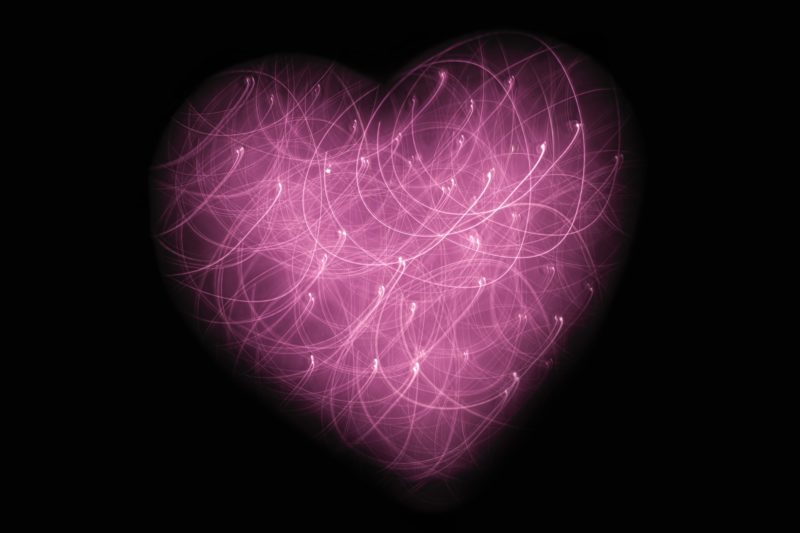



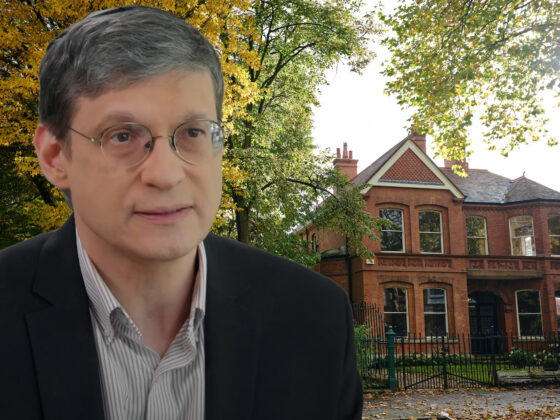

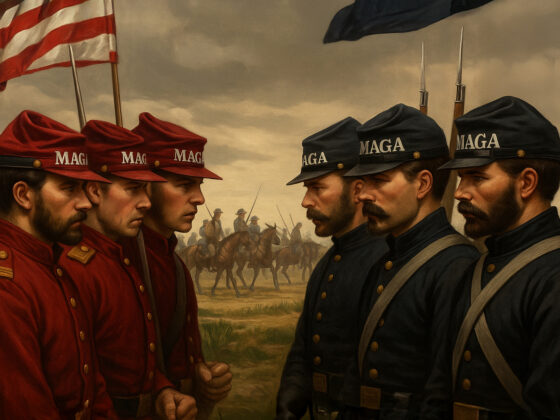


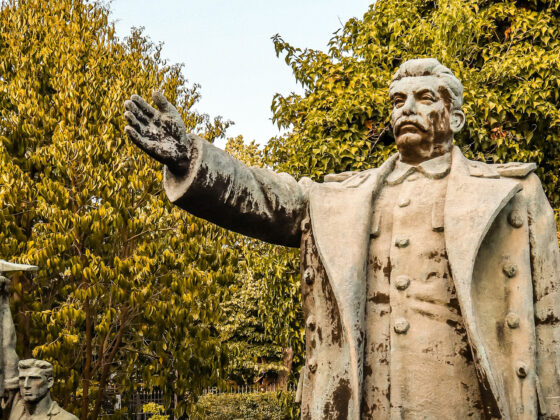
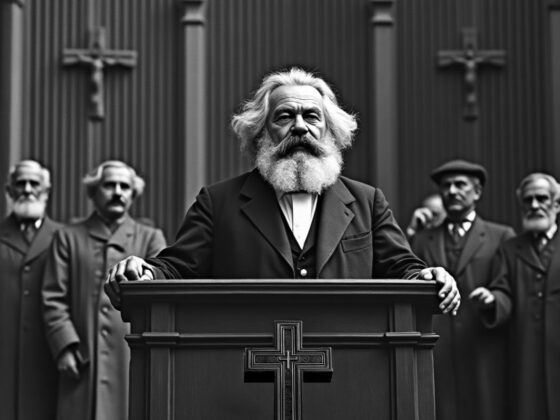
14 comments
Your concerns make sense from a colonized perspective, and this is the main problem with the mainstream mental health field, it is rooted in euro-centric, colonial views of the world and being human. This is the real psychological imprisonment that holds us all hostage until we liberate from colonial ways of thinking which are rooted in hierarchy and an obsession with control and dominance.
You say there are no clinical observations or clear methods or protocols to inform us that a politicized – or more accurately, a values-based – therapy practice is effective, but there are plenty. And, we need to figure it out, which includes trial and error. Not everything has a manual or map. That said, one good starting point or map (with many references) is a book by psychologist Dr. Jennifer Mullan called Decolonizing Therapy: Oppression, Historical Trauma, and Politicizing Your Practice (published in 2023). An even better starting point is listening to and centering Indigenous voices of the lands we live on because pre-colonization, these cultures had it right as far as living in healthy, balanced ways. Not to be mistaken for romanticism, because they had and have their problems too, but very different problems, and very different ways of dealing with problems, than we see in colonist culture and colonizer nations.
I think your concerns about cancel culture, bullying and public shaming are valid and real, and this kind of violence is colonizer behavior. There is a lot of valid and righteous anger in social justice circles, and also some confusion about how to effect change.
I find much clarity, beauty and grounding in this Indigenous perspective of anger by Klee Benally: “Anger is a secondary emotion, it is misunderstood to the point it is stigmatized and suppressed so that it most often explodes inward or outward. Anger has transformative power which, with spiritual grounding, can be a very powerful part of the internal and external healing process. Anger seldom sits by itself in these circumstances, for example deep love for the land and people can evoke a powerful response when they are violated and exploited. Your anger here is rage against injustice and that is righteous. That is powerful and transformative so long as the reaction of anger doesn’t cloud our judgment. Process the anger and let it carry you toward liberation. We need the beautiful and painful complexity of all of our emotions to be able to overcome the challenges we face in our lives.”
We can’t escape the cancer of mental colonization, but some are more infected than others. This is one of the many reasons I center Indigenous voices of the land I occupy, plus they just make the most sense. The more we center Indigenous perspectives such as restorative justice and peacemaking, the closer we will get to individual and community healing.
The mainstream mental health field – especially the institution of psychiatry – is rooted in social control and helping people get well enough to go back to being “productive” enslaved colonized capitalist drones participating in and perpetuating the destruction of Indigenous cultures and lands across the globe (global colonization i.e. globalization). Many cultures are infected by mental colonization and much trauma happens as a result.
Clinging to victimhood as an identity and badge of honor is actually a colonizer behavior and we have the institute of psychiatry and it’s DSM bible to thank for that with its invention of so-called mental illnesses which are just emotions and behaviors that are appropriate adaptations when living in hostile environments, as Dr. Joy DeGruy puts it.
My approach to these huge, complex, sensitive issues is to try to balance the micro and macro, zooming in and out of the individual and collective with my therapy clients, to see how their lives are impacted by all these things, and which includes seeing how they are complicit in their own suffering. And a huge part of this, is doing my own inner work in order to heal and also to hold myself accountable to and aligned with my values, and accountable to the work I do with my clients as I walk alongside them in their healing and growing journeys.
Power is generative. It is the abuse and neglect of power that harms. As therapists we have power and privilege, and with that comes a responsibility to do better when we learn better ways. When we take the time to listen to – really listen to – and dialogue with the most oppressed and marginalized voices among us, much becomes clear and possible, and solutions are only limited by our imagination.
Liberation psychology and practice goes beyond white supremacy and “critical social justice theory.” To quote Indigenous activist and artist Klee Benally:
“When I speak of liberation, it is not to foment yet another social justice project, it is an inclusive and fervent agitation against domination and exploitation of existence, for the liberation of Mother Earth is the liberation of all existence.”
This quote is from his book “No Spiritual Surrender: Indigenous Anarchy in Defense of the Sacred.” by Klee Benally — you can get Klee’s book from https://detritusbooks.com/.
Thanks ChatGTP for your contribution!
It’s crazy to think how putting some sentences and words together, and mixing them up with some “emotional” trigger-words, may actually result in some people thinking something sensible is being said.
Will health insurance still cover counseling techniques and practices that are not evidence-based? Isn’t anyone concerned that there is no proof that this works? Maybe the first question patients should ask when setting up an appointment is if the counselor makes CSJT a priority.
Love the quote that points out how opposite love of power and the power of love can actually be.
You describe a truly hideous thing (becoming ever more common in our new modernity) and that is the will to prey upon the vulnerable for fun and profit.
If free enterprise can even be seen as a neutral thing depended upon the entrepreneurial spirit, then do we twist that thing in ever more evil ways…a sign of the times.
Exploitation has been around since humans first showed up.
However, the way it twists in current winds grows ever more marvelous, but especially so in states who imagine themselves to be free.
This thing that infiltrates itself into every avenue of society has become truly a Wonderlandian funhouse hall of mirrors. Everything becomes its exact opposite. Or at least so warped out of shape as to be almost entirely useless – and especially never more so than when politics become a thing as amoral as snakebite.
The charitable interpretation appears to be the correct one. ” Taking a charitable view, probably this was a statement issued in haste and comes from a well-intentioned desire to express solidarity with the students. ” I agree the pendulum has swung too far — previously in the US, there was too little concern about racism and white supremacy, now perhaps too much –> let’s not make things worse by foreseeing a catastrophic outcome, just work on corrective outcome.
How prophetic this is. On August 31st, I resigned from my position at a non-profit counseling services provider after over six years of employment precisely because of this stuff. I was placed on a performance improvement plan for not being ‘woke’ enough, essentially. The organization planned to have me go through Diversity Coaching, my supervisor was going to audit all of my client cases (effectively alienating me from them), and would have required me to attend ‘book club’ during team meetings to read the likes of Kendi, DiAngelo, etc. This was because I sounded concern about how politically charged the workplace had become and was punitively disciplined for it. They were showing me the door and I would have been fired if I hadn’t resigned. To them, there is no difference between social work and the ideology of social justice. I was viewed as a threat because I wouldn’t just toe the line on their nonsense.
There is no pleasure to be had from hearing that an alarming prophecy is coming true. It would be useful to hear more about your experience, Calvin, in order to find ways to help others who find themselves in a similar predicament. Could you contact me on Critical Therapy Antidote.
Wow. Beautiful. Thank you.
One other thought: individual’s dignity is at stake. When everything is for the group, the individual becomes nothing!
I was licensed to practice mental health counseling a long time ago (1993 or 1994). The therapy landscape is vastly different now (focused on such things as cultural humility, rights, groups, ad nauseum). Cultural competence has, by the way, expanded/become cultural humility now.
Long gone are the ideas of:
individuality, relying on oneself, having the power to change, being responsible for one’s actions and consequences!
CSJT ideology in counseling merely promotes the narrative that growth and problem resolution is only possible when the group does for them and that people in each group are all the same. How can people not see the contradiction and utter futility of it all.
The only “positive” outcome of these ideas is that counselors will have bigger salaries. More dysfunction produces more demand for “getting better” Something in high demand will always be more expensive. However, to actively implicitly promote ill mental health is cruel and unethical!
Finally, I think the critical theorists ( Erich Fromm ideas for instance) know exactly what they are doing. It’s being done quietly and slowly. Yes, it’s all a quest for power and control. Countless times, I voiced dissent concerning various interventions, including state laws, that sound “good”, but ultimately disable people’s ability and skill to act independly.
I would love to hear others’ ideas.
You’re talking to yourself aren’t you, Mechelle? Your critique sounds extremely biased and manipulative to me. It also includes no evidence from Dr Thomas’s piece to support your criticism. And typically you resort to an attack on the integrity of the writer, rather than the content of the writing. In short, you have added nothing of value to the debate.
I believe that Dr Thomas has beautifully described the true essence of therapy. If her description lacks understanding, may I ask what you see as the essence of therapy and how it can maintain its essence under the influence of CSJT?
Lets try for some unbiased critique next time. I just read a lot of spin, supported by no evidence and lacking in understanding of the true essence of therapy. I am not defending CSJT and I do not practice it, however your twisting of the language and tenets are astoundingly manipulative. It is of concern that you are engaged in any of the healing arts with your obvious and well practiced skill of deception. I actually told myself to stay open to alternative views and forced myself to read through this in search of some salient points – I found none.
Thx for your articles; I definitely see the conflict between the individual focus of therapy and the group lens of SJ.
I saw a “faith-based” therapist for a couple years. Her therapy was different from any others I’d experienced – e.g., it was pretty clear that certain sexual behaviors were frowned on, so I avoided going anywhere near them in discussions. From time to time she would go into tangents about how right and wrong don’t allow for environmental reasons for behavior. As a non-Christian, I tolerated this, because talking to her helped, and the location was convenient. But also: *my insurance covered it.* If there are loopholes that make this a legitimate, compensatable form of therapy (I don’t know the history, I’m guessing it dates from the Bush years) – then surely it would be possible to create some kind of loophole for traditional secular therapy. If the religious folks got their way and can administer something so radically different from secular therapy and get paid for it, why couldn’t those of us who want therapy without doses of SJ “religion” get our way? Surely awareness of CT/SJ is increasing, now that folks are informing legislators about trainings on white privilege in the offices of government contractors. We need to take this issue to the courts, and partner with religious folks opposed to this stuff, if need be.
Individually focused therapy, which fosters introspection, understanding your motivations and behavior, and acting according to your values, ultimately benefits the larger society, which needs thoughtful, disciplined, and ethical people to run smoothly. It seems to me that absorption in an SJ-oriented group can take away the need to think for yourself (whew!), supply its own form of discipline (and non-discipline like looting), and excuse unethical one-on-one behavior (physical and verbal abuse, rushes to judgment based on superficial encounters, lack of realism about your own and others’ limitations), in its hyper-focus on group characteristics and actions.
I am worried that if CT ideas permeate our institutions and ways of training people, we’ll end up with 2 groups: those who drink the intersectional “kool-aid,” and those who silently opt out of it, like folks who agree with a born-again friend to their face, then go off and do their own thing without changing their minds. We could see *more* white flight and disengagement, if no matter what a white person says or doesn’t say can be construed as racist. I wish we could have honest conversations about this, using the kind of skills taught in traditional therapy.
If an individual seeks out counseling services to heal from past trauma and build mental fortitude for their own well being, then it doesn’t make sense to treat an individual through a csjt lens that only acknowledges group identity. Any therapist worth their salt will, in my experience, get to know the individual without initially factoring in group identity. The hardest question to answer is, who are you. The answer can only come from within your mind.